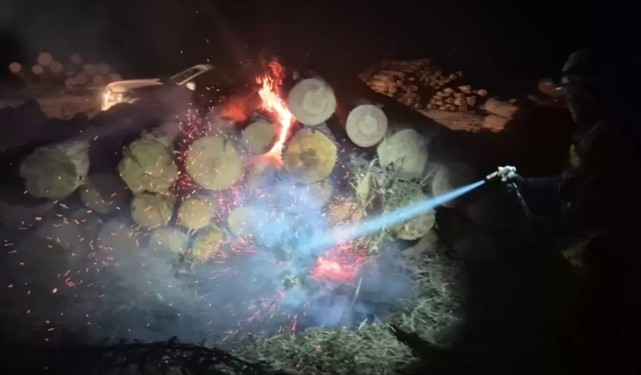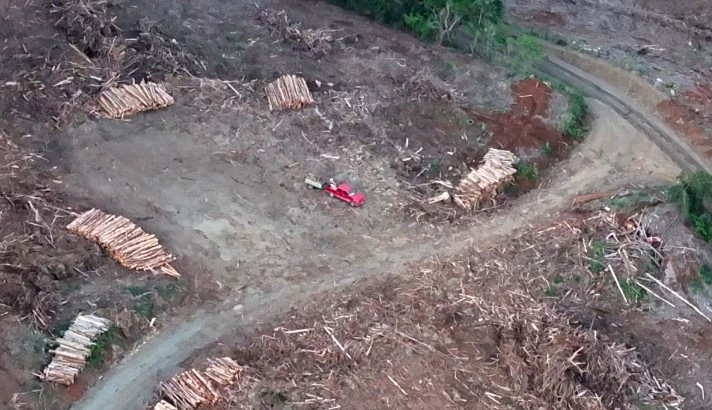Projected that by March 2026 the new Biodiversity and Protected Areas Service will operate in Biobío
Starting in March 2026, the Biobío Region will officially have the installation and operation of the new Biodiversity and Protected Areas Service (SBAP), a state institution created by Law 21.600 and approved in 2023, after over a decade of legislative processing and citizen and indigenous consultations.
This service, which already operates nationally with a central office in Santiago, aims to centralize and strengthen the management of the country's protected areas—a function that until now has been fragmented among entities such as Conaf, SAG, and the National Monuments Council (CMN).
"The Biodiversity and Protected Areas Service is a new institution that consolidates the State's actions regarding protected areas and biodiversity conservation, which are currently scattered," explained Pablo Pinto, Regional Ministerial Secretary (Seremi) of the Environment for the Biobío Region.
"We expect to have the regional office installed by the end of this year and, starting in March 2026, begin active management of protected areas and the implementation of conservation plans," he added.
A milestone decades in the making
For experts and academics, the creation of the SBAP not only represents a legislative advancement but also the culmination of a long-awaited phase in Chile's environmental governance.
"This is good news because our country finally has a public agency that wakes up and goes to bed thinking about protected areas," said Dr. Oscar Reicher Salazar, an Environmental Sciences expert and academic at the University of Concepción.
"Conaf had very diverse functions, and this required greater specialization, which will now be realized with the SBAP and the new National Forestry Service (SERNAFOR)," he noted.
One of the key focuses of the new service will be the development of management plans for each protected area. These instruments will clearly define which activities are permitted, which are restricted, and how ecosystems hosting critical biodiversity are managed. "The law provides a regulatory framework, but it's the management plan that will bring that law down to the ground," added Reicher.
Tensions and opportunities for Biobío
In a region like Biobío, where significant biological wealth, high-value environmental zones, and strong industrial activity pressures coexist, the implementation of the SBAP will not be without challenges.
This is highlighted by Dr. Ricardo Barra, director of the EULA Center at the University of Concepción, who stated that "the service's establishment in the region will be crucial to balancing tensions between conservation and productive development. Biobío already has a biodiversity strategy and academic capacity to collaborate in the service's implementation."
Barra warns that one of the most relevant institutional changes is the transfer of oversight of protected areas from the Ministry of Agriculture—which has a production-oriented focus—to the Ministry of the Environment. "This shifts the focus, and while it's good news, it won’t be free of friction with institutions that previously held some of these responsibilities," he noted.
What changes for citizens?
The creation of the SBAP also implies a new way of interacting with protected areas. The service will be responsible for their administration, oversight, and conservation, as well as coordinating programs that protect threatened species. Additionally, it will integrate into its management not only national parks and state reserves but also private protected areas and nature sanctuaries, which will need to adapt to the new categories established by the law.
A National Biodiversity Fund will also be established to finance conservation initiatives, including those from community or private organizations. In this sense, the service could become a catalyst for new ecological restoration and environmental education projects in the region.
"The key point is that there will now be a single institution with technical authority to coordinate this matter. This will allow us to advance more solidly in protecting our natural heritage," emphasized Biobío's Environment Seremi, Pablo Pinto.
The challenge of implementation
Although the law is already in effect, its full rollout in regions like Biobío will require sustained effort. "Once the regional office is installed, we will begin standardizing protection categories, oversight, designing management plans, and working with communities," explained the Seremi.
Expectations are high, both from authorities and academia, which has expressed interest in collaborating in the design and implementation of the new service. In the words of Dr. Barra, "Biobío has the scientific and technical capacity to become a national model for biodiversity management. Hopefully, this translates into effective participation."
Source:Diario Concepción

















